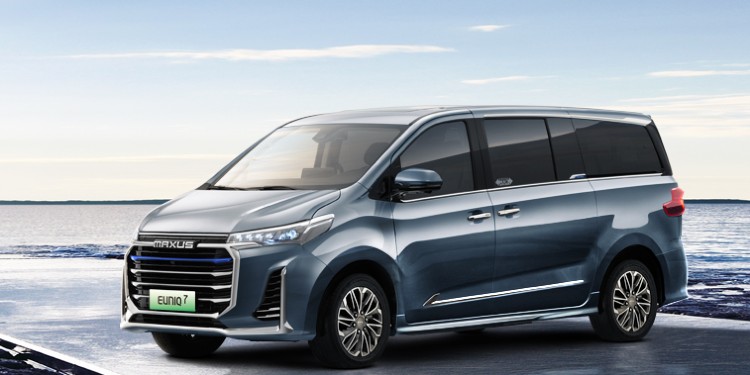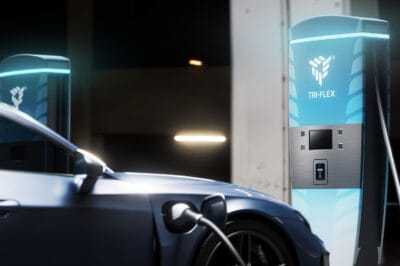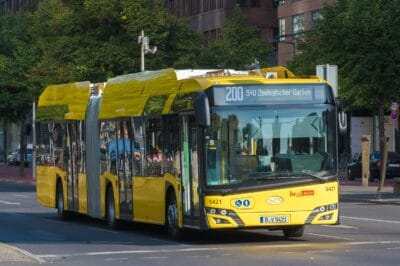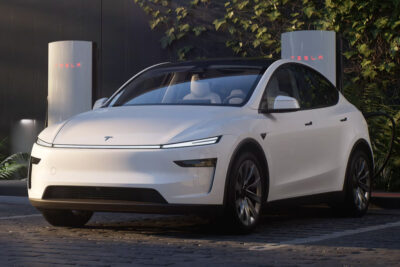SAIC announces fuel cell lineup
Chinese manufacturer SAIC has announced that it will bring at least ten fuel cell vehicles to market within the next five years. At the same time, the Chinese government is expected to announce further support for fuel cell vehicles.
SAIC appears to be focussing on smaller passenger vans as well as commercial vehicles, while government policies will focus on supply chains and business models.
For its part, SAIC aims to achieve annual sales of more than 10,000 units by 2025. According to local media, SAIC’s targeted sales volume would correspond to a share of more than ten per cent of the Chinese FCEV market. By 2025, cumulative sales are expected to exceed the 30,000 vehicle mark, as SAIC announced in its strategy presentation.
The Chinese vehicle-making giant that has partnerships with both Volkswagen and General Motors said it will be speeding up the scale use of the system in trucks and buses while the model SAIC has just presented, the Maxus EUNIQ 7 is a third-generation SAIC fuel cell-powered van or minibus marketed as a Multi-Purpose Vehicle (MPV).
Here, the fuel cell system known as the ‘Prome P390’ is designed to deliver up to 130 kW, while the EUNIQ 7 will have 115 kW. In addition, the fuel cell system (or hydrogen tanks) operates at a pressure of 70 MPa, which is equivalent to the 700 bar now common in fuel cell cars. According to SAIC, the system is lighter and has a higher capacity than the previous version with 35 MPa. The EUNIQ 7 can store 6.4 kg of hydrogen, which should allow for a range of 605 kilometres according to the NEDC common to China.
The fuel cell was developed by Shanghai Hydrogen Propulsion Technology. The subsidiary company specialising in fuel cells has more than 1,000 employees developing corresponding drive systems. According to SAIC’s own statements, the subsidiary’s market value is expected to develop to over ten billion yuan (equivalent to around 1.23 billion euros) in line with the strategy and market growth for FCEV.
“Though constrained by infrastructure, hydrogen fuel vehicles’ use cost is controllable and they are feasible if applied to fixed routes or relatively closed application scenarios, such as sanitation and logistics vehicles,” an insider from SAIC Maxus Automotive told Yicai Global. Refuelling infrastructure for passenger vans and commercial vehicles is quite a different case to that of predominantly smaller, privately-owned vehicles. According to Reuters, new policies supporting hydrogen fuel cell vehicles will require local city governments and companies to build up a more mature supply chain and business models.
The Shanghai-based manufacturer can count on the support of both local and federal politicians. The Shanghai city government wants to take the lead within China in the commercialisation of hydrogen vehicles. The city of Shanghai has now ordered FCEV light buses from SAIC, among others, and 20 hydrogen filling stations are to be built in the city.
SAIC itself is based in Shanghai and was one of the first Chinese manufacturers to work on fuel cell technology, even while the government’s subsidy policy was mainly promoting battery electric mobility. SAIC produced more than 400 hydrogen fuel cell light buses for pilots in seven Chinese cities, including Shanghai. These have now marked up a total operating mileage of more than 4 million kilometres.
A finance ministry official said earlier this month that China will roll out a new package of policies to support hydrogen fuel cell vehicles. Reuters reports that “industry sources familiar with policy discussions” are saying that the Chinese government might announce a new policy before the end of the month.
SAIC is not the only manufacturer to rely on fuel cells in view of the new government policies supporting fuel cell vehicles. The commercial vehicle manufacturer Beiqi Foton belonging to BAIC wants to sell 4,000 hydrogen vehicles by 2023, and 15,000 by 2025.
With additional reporting by Carrie Hampel
gasgoo.com, chinadaily.com.cn, yicaiglobal.com (all SAIC), reuters.com (BAIC)





0 Comments